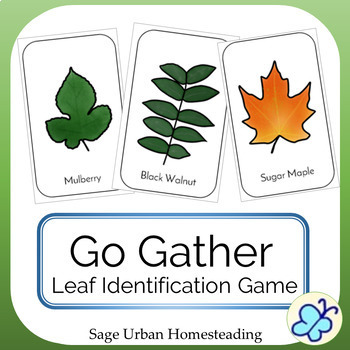Go Gather Leaf Identification Game
- PDF
Description
Do you wish you could easily identify all of those leaves you collect on nature walks?
Here is a "Go Fish" style game for learning leaf identification for 12 common and useful trees that grow in the eastern United States.
There are a variety of card decks included: summer colors, autumn colors, and blank outlines. The decks are also available with or without labels.
The trees included are basswood, black oak, black walnut, mulberry, pawpaw, persimmon, redbud, river birch, sassafras, sugar maple, sweetgum, and tulip poplar.
I have included facts about each type of tree and maps showing their habitat range. These can lead to further topics of research. See what grows in your area and look for leaves outside.
There are also sheets to record a bar graph of the game score so the event can be recorded in the student portfolio.
That's right, this one activity can tie together science, social studies, and math, as well as working on communication skills!
Related Resources
Learning Logs (Includes nature walks!)
Erased Print Alphabet Matching Game
Erased Cursive Alphabet Matching Game
All of my products are designed with highly readable fonts for reduced eye strain.
Please remember to leave feedback so you can earn credit towards future purchases on Teachers Pay Teachers. I appreciate hearing how things are going for you and love it when you share ideas for how I can make resources even better.





